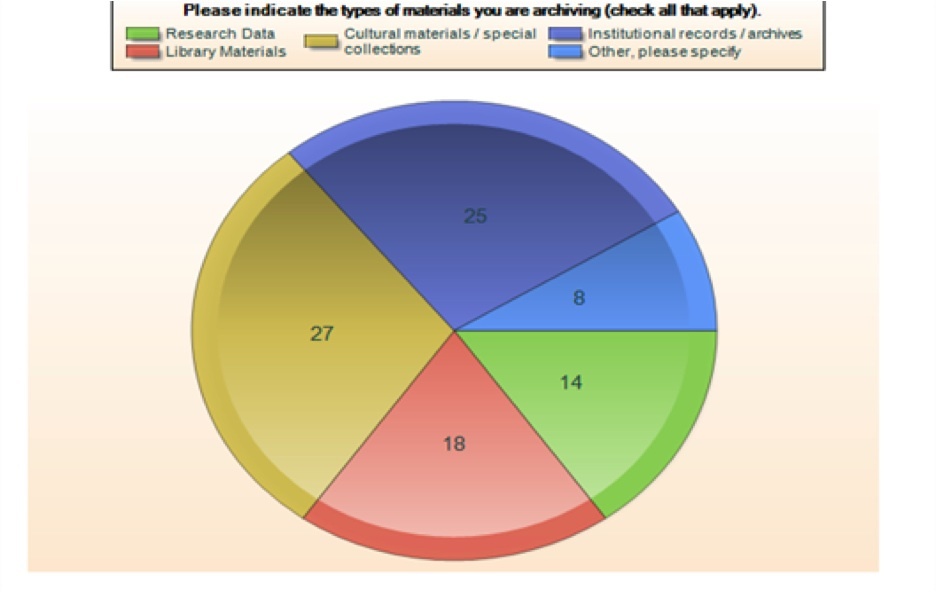Below are some highlights from the survey which saw 47 respondents go through the full survey and close to 400 viewings overall.
Majority of respondents had staff between 25 and 50; many with only a single archivist or staff person responsible for the archives.
Collections were in the tens of thousands or measured in linear feet (in the thousands).
A little over 40% of respondents had implemented an archival solution, a little over 30% planned to, and the remainder were not there yet.

A majority felt that a publicly available commercial or open source product, customized as needed and maintained by internal staff was the most likely affordable and sustainable solution.
A large majority, 3 to 1 were not using an open source platform for preservation and archiving.
Security concerns included rights and reproduction issues, external users, sensitive metadata, and limited download resolution.
Capabilities needed included digital asset management, rights and reproduction management, collection management, presentation, and web content management.
Interface and workflow needs included connection to other systems like e-commerce and web content management, and branding.
What would be most useful(select quotes):
"Repository software that essentially requires no or very few resources (programmers, $)."
General comments (select quotes):
"I have installed and tried out Fedora several times and find it capable, but much too complicated to manage collections unless you install a framework on top of it, which itself adds a level of complexity that we are not ready to deal with."
"Open source software is useless for museums and archives with no IT staff. More than half the historical societies/museums have no paid staff. These are the organizations most in need of help and resources, but they are ignored by organizations such as MCN, AAM, IMLS, etc."
